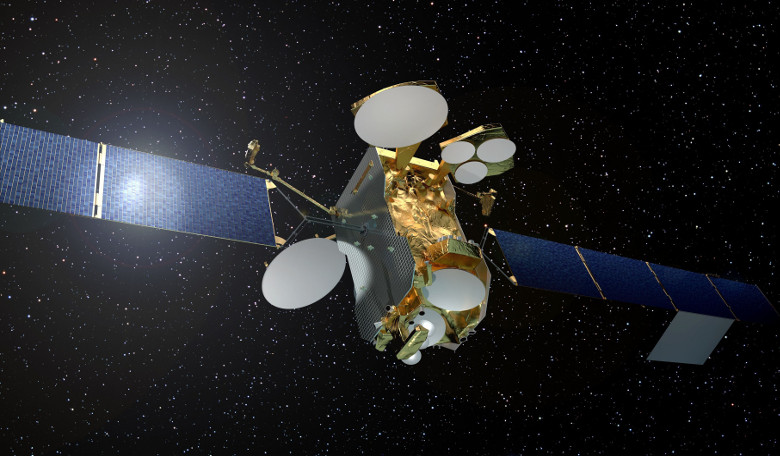Europe’s first all-electric telecom satellite – Eutelsat 172B – has reached its final working orbit some 35, 800 kilometres above the Pacific Ocean. The satellite, which was built for Eutelsat by Airbus, relied entirely on its electric thrusters to rise from its initial orbit into its planned position over the equator and in doing so, broke the record for the fastest satellite electric orbit raising (EOR).
In the four months prior to its launch, testing of the satellite showed that the electric thrusters smoothly and efficiently propelled the satellite to the targeted orbit, while consuming almost six times less propellant than a similar satellite using chemical propulsion.
“Electric propulsion is at least an order of magnitude more efficient than standard chemical propulsion for satellites,” explains ESA electric propulsion specialist Jose Gonzalez Del Amo. “By electrically charging propellant and accelerating it using electrical power from solar arrays, much more energy is squeezed out of each breath of gaseous propellant.
“This opens up the option of flying lighter satellites because they can fly on smaller launchers. Or a greater percentage of the same mass can be dedicated to the revenue-earning payload in place of bulky propellant tanks,” added Gonzalez Del Amo.
Gonzalez Del Amo explains that the main trade-off with using an all-electric satellite is that it takes much longer for it to reach its final orbit because electric propulsion provides low thrust as it fires continuously to accelerate gradually over time. Eutelsat 172B for example took four months to reach its working orbit after its launch on 2 June.
ESA have been involved in a number of projects concerning the satellite through its Advanced Research in Telecommunications Systems (ARTES) programme. ARTES offers varying degrees of support to projects with different levels of commercial maturity and in the case of Eutelsat 172B, one example from a number of newly integrated technologies is the inclusion of fully articulated thruster arms.
“All-electric telecom satellites have been in service globally since 2015, but Eurostar E3000 has a novel addition: a pair of 3 m-long three-jointed arms carrying thrusters on the end,” explains ESA structural engineer Mario Toso. The Eurostar E3000 is a generic satellite model most commonly used for commercial and military communication satellites manufactured by Airbus and the Eutelsat 172B is the first of six Eurostar E3000 all-electric platforms to be deployed.
“Instead of having different thrusters embedded at corners of the satellite, the twin arms can be moved freely about its body,” added Toso. “One big advantage is that the thrusters can always be aligned precisely with the satellite’s centre of gravity for orbit raising and stationkeeping – saving propellant to elongate mission life.”
Improved versions of the thruster arms and power unit will now be used in Eurostar Neo – Airbus’s next-generation satellite platform.
Speaking of the success of the all-electric telecom satellite, Nicolas Chamussy, Head of Space Systems at Airbus said; “we are the first company to demonstrate full electric propulsion for satellites of this size and capacity, enabling their launch in the most cost-efficient manner. Furthermore, with our system design, operation strategy and the plasma thruster technology we implement, we have completed the fastest electric orbit raising ever from transfer to geostationary orbit, which will allow Eutelsat to put their electric satellite in service in a record time.”











